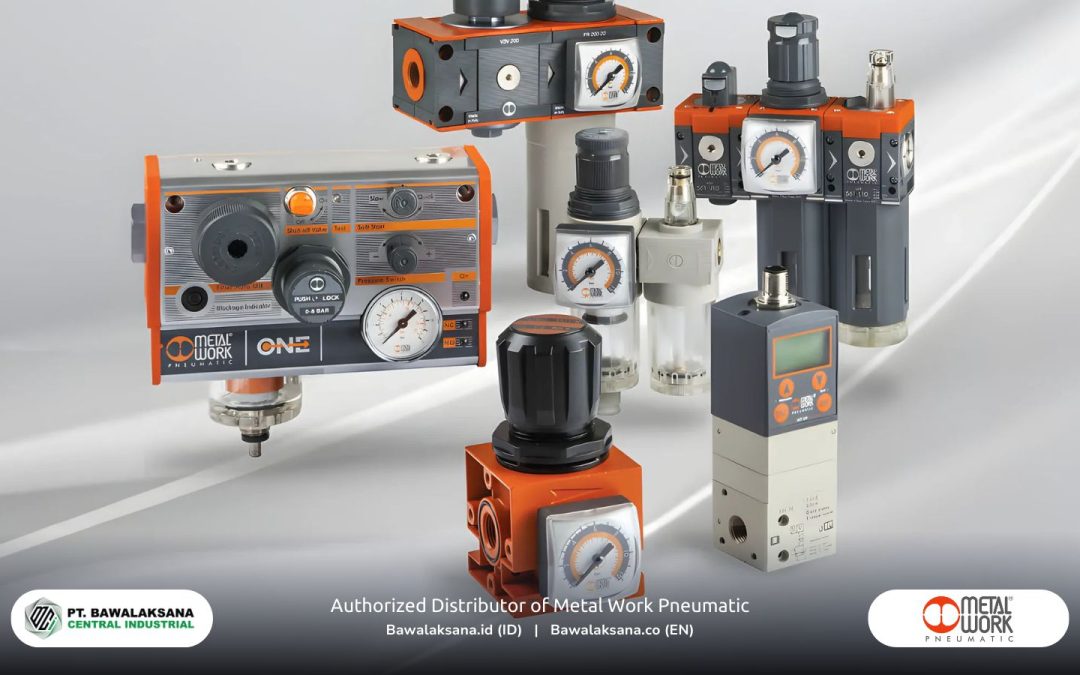In January 2025, Indonesia’s manufacturing Purchasing Managers Index (PMI) touched 51.9, which is the highest level since June 2024. This achievement was driven by rising production and increased demand for both domestic and export markets, as well as employment.
As is well known, when the manufacturing PMI is above 50, it means that the sector is entering an expansion phase. Conversely, when it is below that, then the manufacturing sector is contracting, as happened in July-November 2024.
The manufacturing sector contributed 18.98% to the Gross Domestic Product (GDP) in 2024. Meanwhile, the export contribution of the non-oil and gas processing industry reached a value of 196.54 billion United States dollars.
This positive performance is an encouraging signal, as it is an indication that the recovery of the industrial sector is getting better. Given, the manufacturing sector is an important key and as a driving force for the national economy.
In this article, the Bawalaksana.id team would like to present some data related to the strategic role of the manufacturing sector in boosting Indonesia’s economic growth for 2025.
Broadly speaking, through the three indicators that we will collectively present in this article, it shows that the domestic economic recovery is getting more solid. Even so, global challenges and economic uncertainties are still drawing the attention of all parties.
Manufacturing sector contribution to GDP 2025
The manufacturing sector has consistently strengthened its role as the backbone and driving force of the national economy. This is as we have discussed in previous articles, The Role of the Manufacturing Industry in the Indonesian Economy.
In 2024, the manufacturing sector’s contribution to Gross Domestic Product (GDP) was recorded at 18.98%, up from 18.67% in the previous year and 18.34% in 2022.
This contribution makes manufacturing the largest contributor to national economic growth, amounting to 0.90 points of the total growth of 5.03% in 2024.
Arguably, this is equivalent to 20% of national economic growth, putting manufacturing in the top spot, followed by trade in second place.

Contributor of USD 196.54 Billion to National Exports
Another important manufacturing sector contribution to note is in the non-oil and gas processing industry sector. This sector has contributed USD 196.54 billion (around IDR 3,300 trillion) or 74.3% of Indonesia’s total exports in 2024.
This achievement is an increase from the previous year which contributed 72.24%. This high export contribution shows the competitiveness of Indonesian manufactured products in the global market.
This achievement is also not just a momentary success. Rather, it is a positive trend that occurred thanks to an increase in contribution from the previous year.
Hopefully this is also an indication of continued improvement in the production capacity, product quality and efficiency of Indonesia’s manufacturing sector.
That way, the competitiveness of Indonesian-made products in the international arena is getting better. The main indication is the high proportion of exports from the non-oil and gas manufacturing sector.
Investment and Labor Absorption
The manufacturing sector is a big hope as a place to absorb labor widely. That way, the direct impact on the real economy can be felt by the community directly.
It should be noted that investment realization in the manufacturing sector in 2024 has reached IDR 721.3 trillion or equivalent to 42.1% of the total national investment realization.
This value has certainly increased compared to the previous year of around 39.84%. This means that investor interest in the potential of the domestic processing industry is getting higher.
In terms of employment, the non-oil and gas manufacturing industry also absorbs 19.96 million workers in 2024. This figure increased from 17.43 million people if we compare it with 2020.
Therefore, it can also be said that the manufacturing sector has a dual role. That is, as a motor of economic growth as well as a creator of jobs for the community.

Economic Indicators to Know the Health of the Manufacturing Sector
There are at least 3 key economic indicators that can be viewed to determine the strengthening of manufacturing activity and people’s purchasing power, such as:
- Purchasing Managers Index (PMI)
- Real Sales Index (RSI)
- Consumer Confidence Index (CCI)
These three indicators are important when we want to know what the performance of the real sector and national economic growth will be like this year (2025).
Although, some may argue that these indicators are biased. This is because the situation around us still shows a very significant contraction in the economy.
Purchasing Managers Index (PMI)
Based on a press release from S&P Global, Indonesia’s manufacturing PMI in Q1 2025 showed a significant upward trend.
In January 2025 it was 51.9 up from 51.2 compared to December 2024. It then jumped to 53.6 in February 2025 and this was the highest in the last 11 months.
However, in March it declined to 52.4 but this is still considered expansionary.
According to the same source, the strengthening PMI was driven by three consecutive months of rising production and increased demand from both domestic and export markets.
In addition, the increase was also supported by labor recruitment in the manufacturing sector, which recorded the highest growth in the past two and a half years.
Real Sales Index (RSI)
IPR is a reflection of the strength of public consumption and is the main engine of economic growth.
Quoting from Infobanknews, that in February 2025 IPR experienced growth of 2.0% (YoY) and 3.3% (MoM).
In detail, the main drivers of this increase were as follows:
- Group of cultural and recreational goods (7.5%)
- Motor vehicle fuel (3.3%)
- Clothing subgroup (4.9%)
- Increase in public demand ahead of Ramadan
Consumer Confidence Index (CCI)
Entering March 2025, the CCI still remained in the optimistic zone, at the level of 121.1, despite previously being at a higher level of 125.9 in November 2024.
According to Antaranews, the high CCI was supported by the Index of Current Economic Conditions (IKE) and the Consumer Expectations Index (IEK), which reached 110.6 and 131.7, respectively.
Thus, after observing the 3 key indicators that reflect the current resilience of the national economy, we remain optimistic about the projected economic growth throughout 2025.
Of course, manufacturing as the driving force of the real economic sector also plays an important role in this growth.
Optimism Towards a Brilliant 2026
Thus, we have presented a number of data and indicators that show that Indonesia’s manufacturing sector shows positive growth potential.
Even so, we do not deny that there is a gap with the reality in the community where the economic movement still looks sluggish and it is difficult to find jobs.
However, we would also like to highlight how the manufacturing sector contributes significantly to GDP, export performance, investment realization and employment.
With the positive trend of manufacturing PMI above the 50 level throughout Q1 2025, we should be optimistic for the approaching year 2026.
Global challenges such as economic uncertainties, commodity price fluctuations and international competition have definitely become our concerns throughout the year.
Hopefully, the manufacturing sector can be a booster for the economy for a brilliant and prosperous future for a brilliant 2026.
Frequently Asked Questions
How will the manufacturing sector contribute to Indonesia’s GDP in 2024?
In 2024, the manufacturing sector contributed 18.98% to Indonesia’s GDP, up from 18.67% in the previous year. This shows the important role of the manufacturing sector in the national economy.
What does Indonesia’s Manufacturing PMI show at the start of 2025?
Indonesia’s Manufacturing PMI reached a level of 51.9 in January 2025 and increased to 53.6 in February 2025, signaling the expansion of the manufacturing sector and a positive signal for economic growth.
How much does the non-oil and gas processing industry contribute to national exports?
The non-oil and gas processing industry accounted for 74.3% of total national exports, equivalent to USD 196.54 billion, demonstrating the significant role of this sector in Indonesia’s international trade.
What is the employment trend in Indonesia’s manufacturing sector?
The number of workers in the non-oil and gas processing industry continues to increase, from 17.43 million people in 2020 to 19.96 million people in 2024, showing the important role of this sector in job creation.
What is the target contribution of the non-oil and gas processing industry to Indonesia’s GDP for the period 2025-2029?
The non-oil and gas processing industry is targeted to contribute 21.9% to Indonesia’s GDP in the period 2025-2029, indicating the government’s expectation of the sector’s growing role in the national economy.
REFERENCES
https://goodstats.id/article/industri-manufaktur-sumbang-18-98-terhadap-pdb-indonesia-tSkW8
https://indonesia.go.id/kategori/editorial/8702/motor-penggerak-perekonomian-indonesia
https://m.antaranews.com/amp/berita/4766125/kemenperin-industri-non-migas-pilar-ekonomi-dan-lapangan-kerja
https://www.pmi.spglobal.com/Public/Home/PressRelease/3efe4aff2f2e4e0b88314838a86e9ef5
https://id.tradingeconomics.com/indonesia/manufacturing-pmi
https://investor.id/macroeconomy/391072/kemenkeu-pmi-manufaktur-februari-berikan-harapan-bagi-pertumbuhan-ekonomi-domestik
https://www.antaranews.com/berita/4625269/kemenkeu-kenaikan-pmi-manufaktur-jadi-sinyal-positif-pembuka-2025
https://www.pajak.com/ekonomi/kontribusi-industri-manufaktur-ke-pdb-capai-1898-persen-pada-2024
https://tradingeconomics.com/indonesia/manufacturing-pmi








![10+ Examples of Pneumatic Tools in Daily Life and Industry [2025]](https://bawalaksana.co/wp-content/uploads/2025/05/Sandblasting-large-diameter-pipes-to-remove-surface-contaminants-1080x675.jpg)

